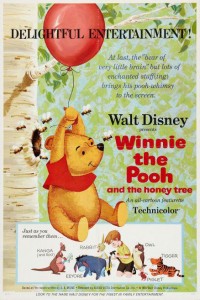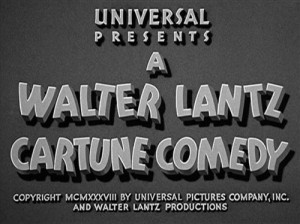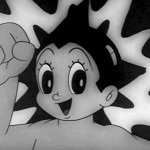Should Have Listened To Roy O. Disney. Disney executive Roy O. Disney saw the problems that the Disney Company would have over the Winnie the Pooh property as early as January 1967. Disney had acquired certain rights to the character in 1961 and made a featurette, Winnie the Pooh and the Honey Tree released in 1966.
 However, it turned out that Milne had granted the same exclusive rights to more than one entity. In a January 1967 memo, Roy wrote:
However, it turned out that Milne had granted the same exclusive rights to more than one entity. In a January 1967 memo, Roy wrote:
“A.A. Milne has certainly and completely balled up his rights to Winnie the Pooh in America. If we were to do anything with Winnie the Pooh, (Stephen) Slesinger is in a beautiful spot to either hold us up for an outrageous price or sit back and reap the rewards of our work and investment.
“If we were to buy Milne’s rights, we would still have to answer to (Ernest) Shepard (the book illustrator) and Slesinger would still have the rights to exploit its characters and stories on radio and television. All of the rights granted to Slesinger are sole and exclusive and non-transferable.”
In truth, there was an over two decade messy and convoluted legal battle between Slesinger and Disney beginning in 1991 over Pooh’s rights and royalties. In 1996, Disney paid the Milne Trust $750,000 to cover royalties on computer software. In 2001, Disney bought the Milne Trust for $350 million dollars especially since the Pooh characters were among the most lucrative Disney properties at the time.
A federal judge ruled in 2009 that the Slesinger family had transferred all its Pooh rights to Disney. In December 2012, the U.S. Court of Appeals for the Federal Circuit in Washington upheld a decision by the U.S. Patent and Trademark Office that blocked Stephen Slesinger Inc.’s challenges to Disney’s control of the trademark for the Hundred Acre Wood clan.
 Don’t Over-Oswald. In an August 1938 memo from William Scully and A.J. Sharick in the UCLA Walter Lantz Collection, the head of sales at Universal announced that the decision had been made to stop using the name “Oswald Cartoon” and to replace it with “Cartune Comedy”. The memo stated, “although Oswald will appear from time to time in various of the cartoons, Lantz is, in this new billing, meeting our various protests against over-Oswalding the cartoon series.”
Don’t Over-Oswald. In an August 1938 memo from William Scully and A.J. Sharick in the UCLA Walter Lantz Collection, the head of sales at Universal announced that the decision had been made to stop using the name “Oswald Cartoon” and to replace it with “Cartune Comedy”. The memo stated, “although Oswald will appear from time to time in various of the cartoons, Lantz is, in this new billing, meeting our various protests against over-Oswalding the cartoon series.”
By this time, animator and director Manuel Moreno at the request of Lantz to try to match Disney characters had redesigned Oswald (starting in “Lost Sheep” December 1935) into a soft, cute, white rabbit that didn’t add a personality but took away his wild humor.
Spy Jam. In 1999, Spike Brandt and Tony Cervone came up with a concept for a feature film that was a James Bond spoof and would have animated versions of Bugs Bunny and Daffy Duck assisting a second-rate live-action spy set in the real world.
 Both Jackie Chan and Eddie Murphy expressed interest in playing the spy character. Chan said in 2001, “My managers are negotiating. I like cartoons. It would be very, very fun.”
Both Jackie Chan and Eddie Murphy expressed interest in playing the spy character. Chan said in 2001, “My managers are negotiating. I like cartoons. It would be very, very fun.”
The project was tentatively known as “Spy Jam” (a follow up on the 1996 “Space Jam”), “Spy Jinx” and other titles.
Warners was boarding a few scenes for this film as well as another feature called “Digi Toons” where the Looney Toons get fired and are replaced by CGI characters but those characters run amok. It is up to Bugs and the gang to save the day.
Warner Bros. was also apparently developing “Race Jam”, a NASCAR themed spin-off to feature the animated Warners characters mixed with live action.
None of the projects developed any further. Recently, Warners announced it was considering “Space Jam 2” with basketball star LeBron James.
 Pinocchio Expert. In early January 1963 after the launch of Tezuka’s “Mighty Atom” cartoon series on Japanese television, there was an immediate attempt to try and sell the cartoon to U.S. television as well. NBC was aware that Fred Ladd, an independent producer who specialized in dubbing foreign films into English, was currently busy on a theatrical feature entitled “Pinocchio in Outer Space” (1965). The Japanese salesmen had pitched Mighty Atom/Astro Boy to NBC as a “futuristic Pinocchio”. So NBC consulted with Ladd, not just because of his track record dubbing foreign films, but because they considered him a “Pinocchio expert” as well.
Pinocchio Expert. In early January 1963 after the launch of Tezuka’s “Mighty Atom” cartoon series on Japanese television, there was an immediate attempt to try and sell the cartoon to U.S. television as well. NBC was aware that Fred Ladd, an independent producer who specialized in dubbing foreign films into English, was currently busy on a theatrical feature entitled “Pinocchio in Outer Space” (1965). The Japanese salesmen had pitched Mighty Atom/Astro Boy to NBC as a “futuristic Pinocchio”. So NBC consulted with Ladd, not just because of his track record dubbing foreign films, but because they considered him a “Pinocchio expert” as well.
 The Sam Simon Script Method. In 2002, animation director Milt Gray commented on the “Sam Simon” method of writing scripts for “The Simpsons” television series: “It is common practice to produce more footage on each show than what actually gets on the air. In most shows, this extra footage amounts to extra frames added to most scenes, frames that can be trimmed out. But on ‘The Simpsons’ about two full minutes of extra material gets produced per show, and each scene is timed very tight, with no extra frames.
The Sam Simon Script Method. In 2002, animation director Milt Gray commented on the “Sam Simon” method of writing scripts for “The Simpsons” television series: “It is common practice to produce more footage on each show than what actually gets on the air. In most shows, this extra footage amounts to extra frames added to most scenes, frames that can be trimmed out. But on ‘The Simpsons’ about two full minutes of extra material gets produced per show, and each scene is timed very tight, with no extra frames.
“As a result, about two minutes of really good finished scenes and sequences are cut from each show. The extra material that was cut was the stuff that gave the rest of the humor a sharper edge. I don’t think this material was censored; it was edited for time.” It was later determined that for the first few seasons that extra footage was just thrown away and not saved.
Lilo & Stitch. Dean DeBlois, the co-director of “Lilo &Stitch” with Chris Sanders, said about the film in a 2002 interview, “We tried to shelter the film from the levels of reinterpretation that normally occur during the process so that it could have a consistent voice—for better or worse. We wanted all the characters in (“Lilo & Stitch”) in that kind of gray zone without archetypical heroes and villains.
“The first thing Thomas Schumacher (chief of Disney feature animation at the time) said was, ‘I love the damaged nature of this character (Lilo)’ and from that point on, he was a champion of it and protected it and created an environment where we knew we were safe to experiment. We hope this film opens the door to less conventional story lines and gutsier storytelling with less financial risk, because we’ve proven it can be done.”
All Aboard! The Metropolitan Transportation Authority, in its museum in Grand Central Station in New York, showed a continuous loop of the Warner cartoon “Porky’s Railroad” (1937) as an example of Americans thinking of “streamlined trains”.


 Jim Korkis is an internationally respected animation historian who in recent years has devoted his attention to the many worlds of Disney. He was a columnist for a variety of animation magazines. With his former writing partner, John Cawley, he authored several animation related books including The Encyclopedia of Cartoon Superstars, How to Create Animation, Cartoon Confidential and Get Animated’s Animation Art Buyer’s Guide. He taught animation classes at the Disney Institute in Florida as well as instructing classes on acting and animation history for Disney Feature Animation: Florida.
Jim Korkis is an internationally respected animation historian who in recent years has devoted his attention to the many worlds of Disney. He was a columnist for a variety of animation magazines. With his former writing partner, John Cawley, he authored several animation related books including The Encyclopedia of Cartoon Superstars, How to Create Animation, Cartoon Confidential and Get Animated’s Animation Art Buyer’s Guide. He taught animation classes at the Disney Institute in Florida as well as instructing classes on acting and animation history for Disney Feature Animation: Florida.




















































Back when the Transit Museum first opened in the late 1970s, they had a continuous loop of one of the Van Buren Toonerville Trolley cartoons playing in their little theater. But the cartoon they probably should be looping in the museum is the Fleischers’ 1938 effort, “Riding the Rails“, which not only benefits from being Oscar-nominated and probably the least ‘cute’ of all of Myron Waldman’s Pudgy cartoons, but also from having pretty accurate drawings of the insides of the subway cars that were running on the lines serving Grand Central 75-80 years ago.
The Lantz situation with Oswald seems to foreshadow the situation a few years later at Warners with Porky, whose picture remained on the title card of all the Looney Tunes shorts for about three years after Leon Schlesinger and J.L. stopped requiring him to be in all of the LT releases (you’ve got to go to the 1944-45 release season to find the first cartoons since 1935 that don’t include some image of Porky in the opening titles).
“Riding the Rails” actually wasn’t nominated for an Oscar. The only Fleischer films that made it were “Popeye Meets Sinbad”,”Educated Fish”,”Hunky and Spunky”, and “Superman”
Pinocchio in Outer Space (in my opinion) was one of the worst animated films I’ve seen until Titanic The Legend Goes On came out. Poor plot line, and no storyline on how Astro the “killer space whale”‘s origin and how Astro was abducted by space aliens (Martians I believe) and by his captors was turned into a marauding weapon of war before turning on his captors and destroying their base, and the song Goody, Good Morning was one of the (again in my opinion) was one of the worst songs ever written for a animated movies.
Face it, it was Kiddie Matinee Pap! Still, I’d give Ladd and the Belgian guys credit for trying at all with a story of a planet’s demise while being ambiguous about it. Of course around the same era we also got “Gulliver’s Travels Beyond The Moon” which aside from sticking another literary character in outer space, at least gave us a clear idea of what happened in it’s conflict.
The DVD has a producer’s commentary where, among other things, he goes on about their conscientious efforts to incorporate “real science”. Oooooooookay.
Also, there’s a gallery of production/promotional art that includes what seems to be the design for a (Macy’s?) Thanksgiving Day Parade float. Did that happen?
There’s also the original idea for “Space Jam 2” which would have featured Mel Brooks as the villain and artwork by Bob Camp:
http://animatedviews.com/2012/artist-bob-camp-recalls-the-ill-fated-space-jam-2/
Such a shame they did not have the foresight for potential use on DVD releases. 🙁
In time they did a clip show of outtake material; I think Troy McClure was the host (“If this is what they cut, just imagine what they left it!”)
Vividly recall Krusty getting cancelled and replaced by a hemorroid treatment infomercial. He begs for a chance to stay on as a before (“Aaah!”) and after (“I can ride a bike again!”) patient.
Weren’t some of them indeed included in some of the DVD sets? I seem to recall a short “Bad Cops” scene that was dropped from “Homer’s Triple Bypass” episode in the “Season Four” set.
I suppose what this anecdote references are the Klasky-Csupo years of The Simpsons. I honestly can’t remember which seasons that the DVD sets started including removed scenes (and I can’t run a check at moment because most of my Simpsons DVDS are on the other side of the U.S.). I at least know that the David Mirkin years did (that is, Seasons 5 and 6), but I don’t recall any of the seasons of which Sam Simon was a part including them.
I suppose what this anecdote references are the Klasky-Csupo years of The Simpsons. I honestly can’t remember which seasons that the DVD sets started including removed scenes (and I can’t run a check at moment because most of my Simpsons DVDS are on the other side of the U.S.). I at least know that the David Mirkin years did (that is, Seasons 5 and 6), but I don’t recall any of the seasons of which Sam Simon was a part including them.
Sometimes deleted moments would pop up in promos for the show when those episodes first aired on Fox. I recall one of Homer having to take care of Maggie that had him putting her diapers on with a staple gun. A scene that was removed that followed had him trying to lift Maggie up only to find the diaper was stuck to the table, resulting in a stretch gag that happened.
Here’s a promo for “The Crepes of Wrath” (first season) that features a scene of Bart watching a can-can performance while eating grapes, I can only assume this was meant to go towards the end after the thieves get busted and Bart is honored as a hero by the French…
https://www.youtube.com/watch?v=OVcp-teejoE
This is a silly belated response to this post and maybe this had been discussed before. I was looking at the “Winnie The Pooh and the Honey Tree” poster that would have been put out in late 1965 to promote the upcoming featurette. I noticed how Tigger resembles a stuffed animal from an old Silly Symphony. Of course, his debut was in 1968’s “Blustery Day” so they hadn’t settled on a fixed design of him yet.